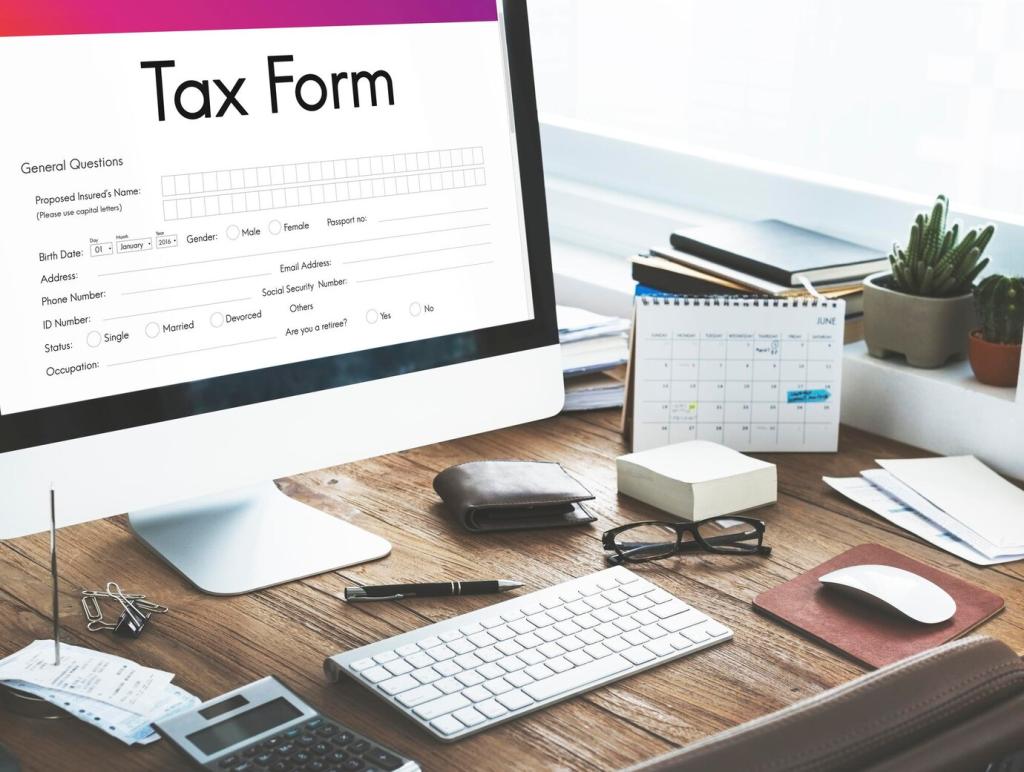
Setting Up Payroll Taxes for UK Companies: Start Right, Stay Confident
Theme selected: Setting Up Payroll Taxes for UK Companies. Whether you are hiring your first employee or scaling fast, this friendly guide helps you set up PAYE, master UK payroll taxes, and avoid costly mistakes. Subscribe for practical updates, share questions in the comments, and tell us where you are in your payroll journey.
Register with HMRC the smart way
Before your first payday, register as an employer via your Government Gateway, then note your PAYE reference and Accounts Office reference. Allow time for HMRC to issue credentials, and set up agent access if a payroll bureau helps you. Comment if you are stuck at any step, and we will point you to the exact HMRC page.
Pick payroll software that fits your workflow
Choose HMRC-recognised software that supports RTI submissions, student loan plans, auto-enrolment, and easy adjustments. Cloud tools can automate updates and integrate with accounting, while desktop options may suit stricter IT policies. Share which features you value most—automation, reporting, or multi-entity control—and we will publish side-by-side setup tips.
RTI on time, every time
Real Time Information means you send a Full Payment Submission on or before the payday, detailing pay and deductions. Consistent timing reduces penalties and keeps tax codes accurate. Build a payroll calendar with internal deadlines for approvals, revisions, and sign-off. Subscribe to receive a printable schedule aligned to common UK pay frequencies.

Deductions That Make Payroll Tick
01
PAYE income tax bands in practice
Know how personal allowances and band thresholds interact with cumulative pay and benefits. Mid-year joiners, bonuses, or irregular hours can shift tax outcomes more than you expect. Use your software’s previews to simulate changes before approving payroll. Share your scenario, and we will craft a sample calculation to illustrate the mechanics.
02
National Insurance: employee and employer shares
NI contributions vary across earnings bands and can differ for employees versus employers. Directors can use annual methods that smooth contributions across the year. Keep an eye on updated thresholds. We encourage you to subscribe for change alerts, so you never miss a mid-year update that affects take-home pay or budgets.
03
Auto-enrolment pensions and salary sacrifice
Auto-enrolment requires assessing eligibility, enrolling workers, and contributing at statutory or scheme rates. Salary sacrifice can reduce NI for both parties but needs clear communications and compliant documentation. Review re-enrolment cycles, postponement rules, and opt-out windows. Tell us your scheme details, and we will provide a tailored checklist.

Send an FPS on or before payday for each payroll run. Include pay, statutory payments, tax, NI, and student loan deductions. If errors surface after submission, correct them promptly in your next file or follow your software’s amendment process. Ask us to review your FPS audit trail structure, and we will share best practices.

Use the EPS to report certain adjustments, such as employment allowance claims or recoveries and offsets relating to statutory payments. Timing can influence when credits land in your account. Keep a simple log that matches submissions to your ledger. Comment if your EPS rejected, and we will suggest common fixes to try.

Pay PAYE and NI using the correct reference for each period, and consider monthly versus quarterly payments based on liability size. Year-end tasks include issuing P60s to employees and handling P11D and Class 1A NIC for benefits. Note key dates and subscribe to receive a printable annual compliance calendar.
Benefits, Expenses, and Special Scenarios
From medical insurance to gym memberships, many perks trigger Class 1A NIC and reporting. You can payroll benefits to spread tax through the year or file P11Ds after year-end. Maintain clear policies and evidence. Share your benefits list in the comments, and we will map typical tax and reporting treatments.
Records, Security, and Peace of Mind
What records to keep and for how long
Retain payslips, RTI confirmations, pension assessments, P45s, P60s, contracts, and benefits evidence for statutory periods. Keep a versioned payroll calendar and change logs. When auditors ask, you can answer quickly. Share what your auditors requested last year, and we will compile a community checklist you can reuse.
Data protection and access controls
Payroll data is highly sensitive. Limit access on a need‑to‑know basis, enforce multi‑factor authentication, and encrypt backups. Review supplier agreements, especially for cloud software and pension providers. Run periodic permission reviews. Tell us how your team manages approvals, and we will suggest simple controls that do not slow you down.
Bringing payroll into your accounts
Set up clear journals for gross costs, tax creditors, and pension liabilities so the balance sheet reconciles to HMRC and providers. Automate where possible, but keep manual override notes. Use a month‑end checklist to catch outstanding items. Subscribe for our reconciliation template that matches RTI totals to ledger entries.
Avoiding Pitfalls and Building Habits
When Maya hired her first engineer, she assumed payroll would be a quick click. A late FPS and a wrong tax code taught her to build a calendar, double‑check starter data, and schedule approvals. Now she submits early, and employee queries dropped dramatically. Share your first‑payday story, and we will feature it.

